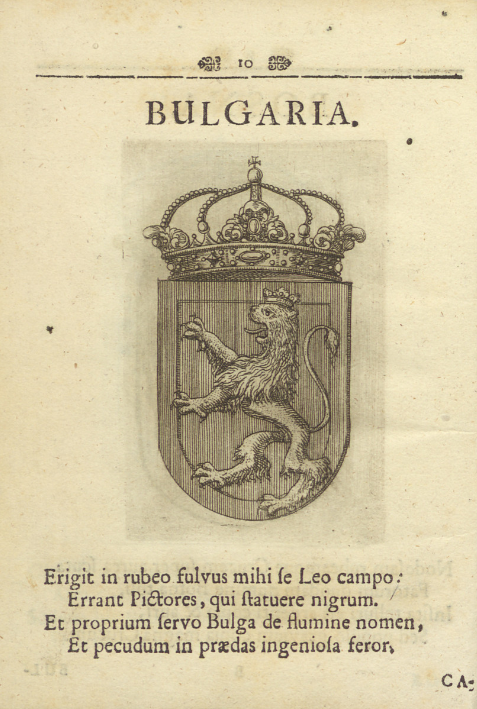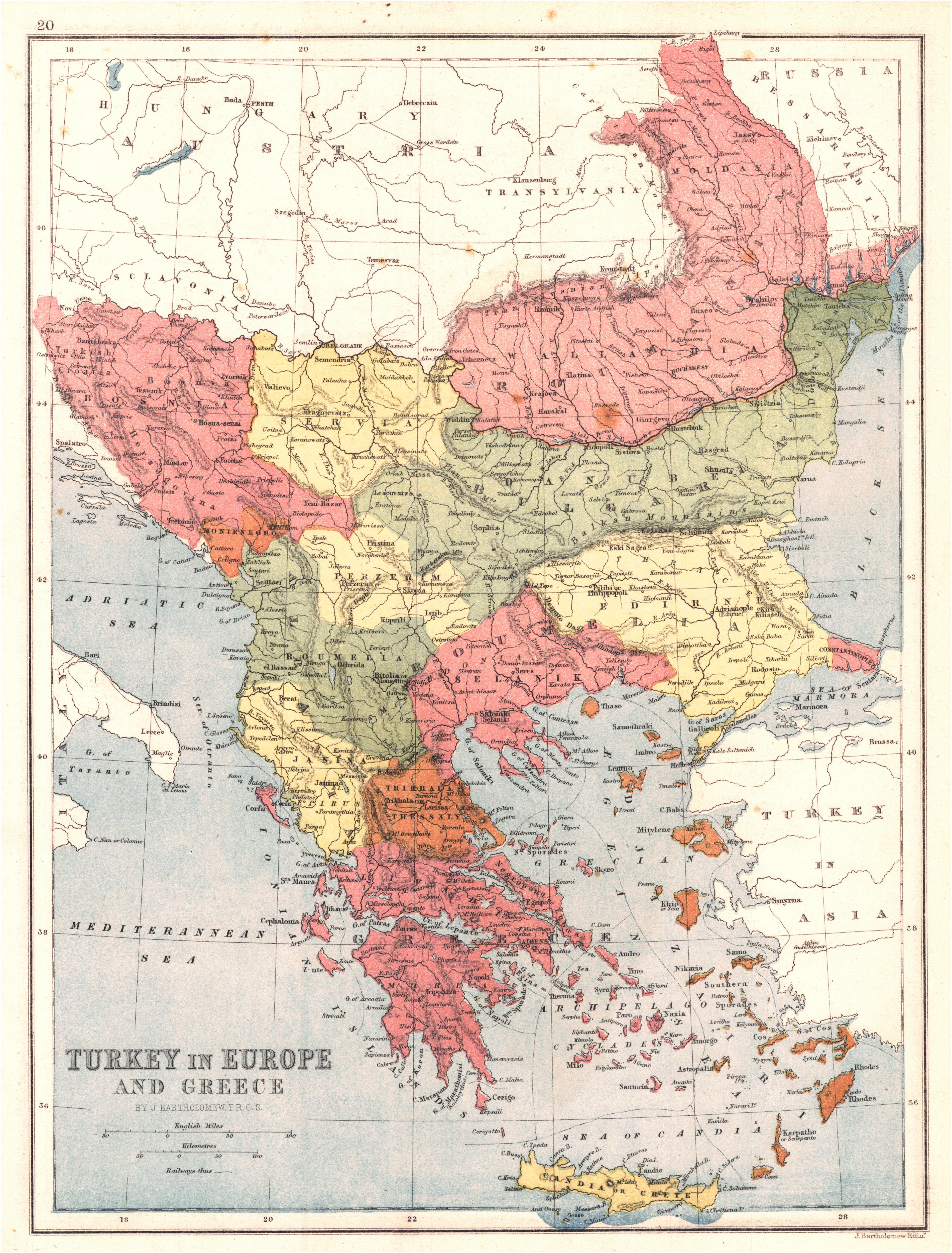|
Strandzha Republic
The Strandzha Commune (), also known as the Strandzha Republic (), was a short-lived anarchist commune in East Thrace. It was proclaimed during the Preobrazhenie Uprising in 1903 by rebels of the Internal Macedonian Adrianople Revolutionary Organization (IMARO), in the Adrianople vilayet of the Ottoman Empire. The independence of the Principality of Bulgaria and subsequent separation of Thrace and Macedonia from its territory had ignited a irredentist movement, organised around the IMARO. The organisation, which counted Bulgarian anarchists among its membership, planned for the liberation of Thrace and Macedonia from Ottoman rule and the establishment of a socialist order in the Balkans. In 1903, they began laying plans for an uprising against the Ottomans and the anarchist Mihail Gerdzhikov was selected to prepare an insurrection in Thrace. In the mountains of Strandzha, IMARO insurgents began preparations for their uprising and the local Thracian peasantry began spontane ... [...More Info...] [...Related Items...] OR: [Wikipedia] [Google] [Baidu] |
Ilinden–Preobrazhenie Uprising
The Ilinden–Preobrazhenie Uprising (), consisting of the Ilinden Uprising (; ) and Preobrazhenie Uprising,Keith Brown (2013). Loyal Unto Death Trust and Terror in Revolutionary Macedonia. Indiana University Press. pp. 15-18. . was an organized revolt against the Ottoman Empire, which was prepared and carried out by the Internal Macedonian-Adrianople Revolutionary Organization, with the support of the Supreme Macedonian-Adrianople Committee, which included mostly Bulgarian military personnel. The name of the uprising refers to ''Ilinden'', a name for Elijah's day, and to ''Preobrazhenie'' which means Feast of the Transfiguration. The revolt lasted from the beginning of August to the end of October. The rebellion in the region of Macedonia affected the Manastir vilayet, supported by Macedonian Bulgarian revolutionaries, and to some extent by the Aromanian population of the region. A provisional government was established in the town of Kruševo, where the insurgents proc ... [...More Info...] [...Related Items...] OR: [Wikipedia] [Google] [Baidu] |
Ottoman Empire
The Ottoman Empire (), also called the Turkish Empire, was an empire, imperial realm that controlled much of Southeast Europe, West Asia, and North Africa from the 14th to early 20th centuries; it also controlled parts of southeastern Central Europe, between the early 16th and early 18th centuries. The empire emerged from a Anatolian beyliks, ''beylik'', or principality, founded in northwestern Anatolia in by the Turkoman (ethnonym), Turkoman tribal leader Osman I. His successors Ottoman wars in Europe, conquered much of Anatolia and expanded into the Balkans by the mid-14th century, transforming their petty kingdom into a transcontinental empire. The Ottomans ended the Byzantine Empire with the Fall of Constantinople, conquest of Constantinople in 1453 by Mehmed II. With its capital at History of Istanbul#Ottoman Empire, Constantinople (modern-day Istanbul) and control over a significant portion of the Mediterranean Basin, the Ottoman Empire was at the centre of interacti ... [...More Info...] [...Related Items...] OR: [Wikipedia] [Google] [Baidu] |
Bulgarian National Awakening
The Bulgarian National Awakening () is the initial period of the Bulgarian National Revival in the history of Bulgaria, from the Treaty of Karlowitz to the Ottoman coups of 1807–08. During this historical period of enlightenment (''The Age of Enlightenment''), the interest in self-identification and self-knowledge was aroused and revived in the conditions of the gradual decline of the Ottoman Empire, especially after the Treaty of Küçük Kaynarca. Background Ottoman Bulgaria, administratively formed as Rumelia Eyalet, is the foundation on which the Ottoman Empire stepped for its establishment, consolidation and conquest in Europe until the two battles of Vienna ( Siege of Vienna and Battle of Vienna). Previously, the two battles at Mohács marked the beginning and end of the Ottoman presence in Central Europe. The period of the 16th and 17th centuries until the Great Turkish War were a time of all-round prosperity without wars in the Bulgarian lands. The Franco-Ottoman ... [...More Info...] [...Related Items...] OR: [Wikipedia] [Google] [Baidu] |
Ottoman Bulgaria
The history of Ottoman Bulgaria spans nearly 500 years, beginning in the late 14th century, with the Bulgarian–Ottoman Wars, Ottoman conquest of smaller kingdoms from the disintegrating Second Bulgarian Empire. In the late 19th century, Bulgaria was Liberation of Bulgaria, liberated from the Ottoman Empire, and by the early 20th century it was Bulgarian Declaration of Independence, declared independent. The brutal suppression of the Bulgarian April Uprising of 1876 and the public outcry it caused across Europe led to the Constantinople Conference, where the Great Powers tabled a joint proposal for the creation of two autonomous Bulgarian vilayets, largely corresponding to the ethnic boundaries drawn a decade earlier with the establishment of the Bulgarian Exarchate. The sabotage of the Conference, by either the British Empire, British or the Russian Empire (depending on theory), led to the Russo-Turkish War (1877–1878), whereby the much smaller Principality of Bulgaria, a se ... [...More Info...] [...Related Items...] OR: [Wikipedia] [Google] [Baidu] |
Second Bulgarian Empire
The Second Bulgarian Empire (; ) was a medieval Bulgarians, Bulgarian state that existed between 1185 and 1422. A successor to the First Bulgarian Empire, it reached the peak of its power under Tsars Kaloyan of Bulgaria, Kaloyan and Ivan Asen II before gradually being conquered by the Ottoman Empire, Ottomans in the late 14th century. Until 1256, the Second Bulgarian Empire was the dominant power in the Balkans, defeating the Byzantine Empire in several major battles. In 1205, Emperor Kaloyan of Bulgaria, Kaloyan defeated the newly established Latin Empire in the battle of Adrianople (1205), Battle of Adrianople. His nephew Ivan Asen II defeated the Despotate of Epiros and made Bulgaria a regional power again. During his reign, Bulgaria spread from the Adriatic Sea, Adriatic to the Black Sea and the economy flourished. In the late 13th century, however, the Empire declined under constant invasions by Mongols, Byzantine Empire, Byzantines, Hungarians, and Serbia in the Middle Ages ... [...More Info...] [...Related Items...] OR: [Wikipedia] [Google] [Baidu] |
Makhnovshchina
The Makhnovshchina (, ) was a Political movement#Mass movements, mass movement to establish anarchist communism in southern Ukraine, southern and eastern Ukraine during the Ukrainian War of Independence of 1917–1921. Named after Nestor Makhno, the commander-in-chief of the Revolutionary Insurgent Army of Ukraine, its aim was to create a system of free soviets that would manage the transition towards a Stateless society, stateless and classless society. The Makhnovist movement first gained ground in the wake of the February Revolution, when it established a number of agricultural communes in Makhno's home town of Huliaipole. After siding with the Bolsheviks during the Ukrainian–Soviet War, the Makhnovists were driven underground by the Operation Faustschlag, Austro-German invasion and waged guerrilla warfare against the Central Powers throughout 1918. After the insurgent victory at the Battle of Dibrivka, the Makhnovshchina came to control much of Yekaterinoslav Governorate, K ... [...More Info...] [...Related Items...] OR: [Wikipedia] [Google] [Baidu] |
Anarchist Communism
Anarchist communism is a far-left political ideology and anarchist school of thought that advocates communism. It calls for the abolition of private real property but retention of personal property and collectively-owned items, goods, and services. It supports social ownership of property and the distribution of resources (i.e. from each according to his ability, to each according to his needs). Anarchist communism was first formulated as such in the Italian section of the International Workingmen's Association. The theoretical work of Peter Kropotkin took importance later as it expanded and developed pro-organizationalist and insurrectionary anti-organizationalist section. Examples of anarchist communist societies are the anarchist territories of the Makhnovshchina during the Russian Revolution, and those of the Spanish Revolution, most notably revolutionary Catalonia. History Forerunners The modern current of communism was founded by the Neo-Babouvists of the journ ... [...More Info...] [...Related Items...] OR: [Wikipedia] [Google] [Baidu] |
Strandzha
Strandzha (, also transliterated as ''Strandja'', ; , or ) is a mountain massif in southeastern Bulgaria and East Thrace, the European part of Turkey. It is in the southeastern part of the Balkans between the plains of Thrace to the west, the lowlands near Burgas to the north, and the Black Sea to the east. Its highest peak is Mahya Dağı (, ''Mahiada'') () in Turkey, while the highest point on Bulgarian territory is Golyamo Gradishte () (). The total area is approximately . Geography and climate The climate of the area is considerably influenced by the Black Sea and is predominantly humid continental in the mountains and humid subtropical at the coast. Major rivers in the area are the Veleka ( long) and the border river Rezovska ( long). Strandzha Nature Park Strandzha Nature Park, established in 1995 in the Bulgarian part of the massif, is the largest protected area in Bulgaria. In size it is , or about 1% of Bulgaria's total territory. The İğneada Floodplain Fo ... [...More Info...] [...Related Items...] OR: [Wikipedia] [Google] [Baidu] |
Balkans
The Balkans ( , ), corresponding partially with the Balkan Peninsula, is a geographical area in southeastern Europe with various geographical and historical definitions. The region takes its name from the Balkan Mountains that stretch throughout the whole of Bulgaria. The Balkan Peninsula is bordered by the Adriatic Sea in the northwest, the Ionian Sea in the southwest, the Aegean Sea in the south, the Turkish straits in the east, and the Black Sea in the northeast. The northern border of the peninsula is variously defined. The highest point of the Balkans is Musala, , in the Rila mountain range, Bulgaria. The concept of the Balkan Peninsula was created by the German geographer August Zeune in 1808, who mistakenly considered the Balkan Mountains the dominant mountain system of southeastern Europe spanning from the Adriatic Sea to the Black Sea. In the 19th century the term ''Balkan Peninsula'' was a synonym for Rumelia, the parts of Europe that were provinces of the Ottoman E ... [...More Info...] [...Related Items...] OR: [Wikipedia] [Google] [Baidu] |
Socialism
Socialism is an economic ideology, economic and political philosophy encompassing diverse Economic system, economic and social systems characterised by social ownership of the means of production, as opposed to private ownership. It describes the Economic ideology, economic, Political philosophy, political, and Social theory, social theories and Political movement, movements associated with the implementation of such systems. Social ownership can take various forms, including State ownership, public, Community ownership, community, Collective ownership, collective, cooperative, or Employee stock ownership, employee.: "Just as private ownership defines capitalism, social ownership defines socialism. The essential characteristic of socialism in theory is that it destroys social hierarchies, and therefore leads to a politically and economically egalitarian society. Two closely related consequences follow. First, every individual is entitled to an equal ownership share that earns an ... [...More Info...] [...Related Items...] OR: [Wikipedia] [Google] [Baidu] |
Anarchism In Bulgaria
Anarchism in Bulgaria first appeared in the 1860s, within the national movement seeking independence from the Ottoman Empire, strongly influenced by the Russian revolutionary movement. Anarchism established itself as a distinct political movement at the end of the 19th century. It developed further in the 20th century, so much so that Bulgaria was one of the few countries in Eastern Europe where the organized anarchist movement enjoyed a real establishment throughout the country, until the seizure of power by the Bulgarian Communist Party. Under the People's Republic of Bulgaria, the anarchist movement survived underground, but was the victim of severe repression. From 1989, anarchism has been freely reconstituted. History Anarchism in Bulgaria has its roots in the Bogomils, a medieval socio-religious movement that resisted the authority of the church and the state. According to Bulgarian historian , for centuries Bulgarians preserved traditions that "contain delements of liberta ... [...More Info...] [...Related Items...] OR: [Wikipedia] [Google] [Baidu] |
Bulgarian Irredentism
Bulgarian irredentism is a term to identify the territory associated with a historical national state and a modern Bulgarian irredentist nationalist movement in the 19th and 20th centuries, which would include most of Macedonia, Thrace and Moesia. History The larger proposed Bulgarian state was suggested under the Treaty of San Stefano in 1878. The issue of irredentism and nationalism gained greater prominence after the Treaty of San Stefano. It established a Principality of Bulgaria, with territory including most of Moesia - the plain between the Danube and the Balkan Mountains (Stara Planina), the regions of Sofia, Pirot, and Vranje in the Morava Valley, Thrace - Northern Thrace, parts of Eastern Thrace, and nearly all of Macedonia. This treaty laid grounds for much of the later claims for a Greater Bulgaria. However, the Treaty of San Stefano was a preliminary one, and the borders of the newly created Bulgaria were established in the Treaty of Berlin. It saw the previous t ... [...More Info...] [...Related Items...] OR: [Wikipedia] [Google] [Baidu] |










